
Space
Far Out: 40 Years Later, Voyager Spacecraft Continue Grand Tour
The twin Voyagers have traveled farther than any other operating spacecraft built by humans.
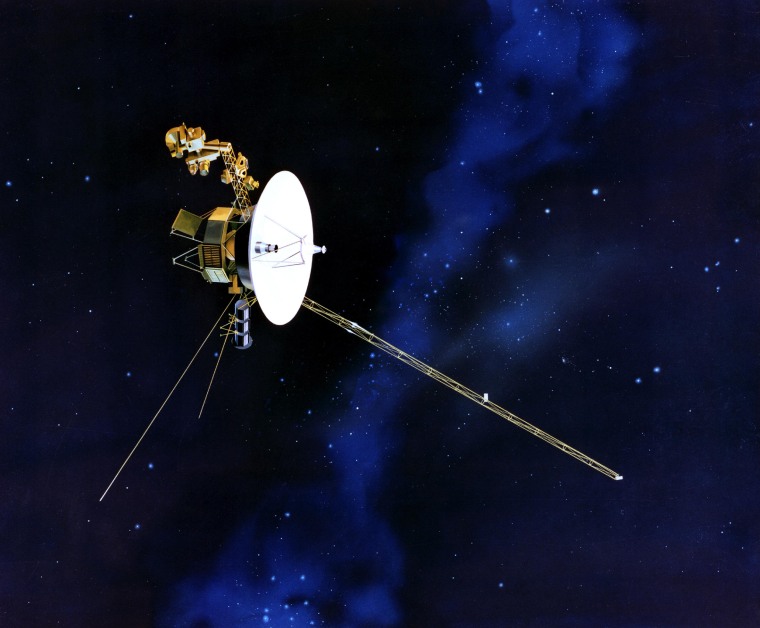
As of Sept. 1, 2017, the Voyager 1 spacecraft was 12.97 billion miles from Earth -- more than 139 times the distance from our planet to the sun.
Above: The antenna of NASA's Voyager spacecraft points toward Earth in this artist's conception.
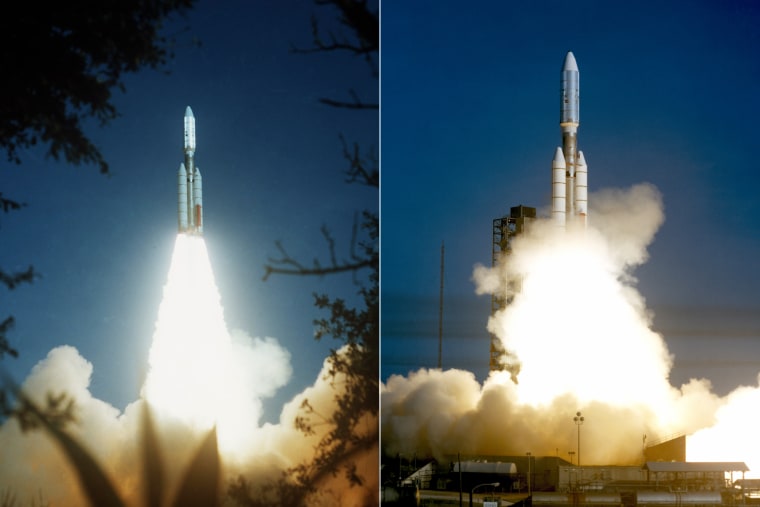
Staggered Launches
NASA's Voyager 2, left, was launched on Aug. 20, 1977 from the Kennedy Space Center in Florida, where it was propelled into space on a Titan/Centaur rocket. Voyager 1 was launched a few weeks later, on Sept. 5, 1977.
Though it launched later, Voyager 1 had a faster, shorter trajectory and has traveled farther than Voyager 2.
Originally designed only to visit Saturn and Jupiter, additional flybys of the two outermost giant planets, Uranus and Neptune, were added to Voyager 2's mission after the first two flybys were successfully achieved.
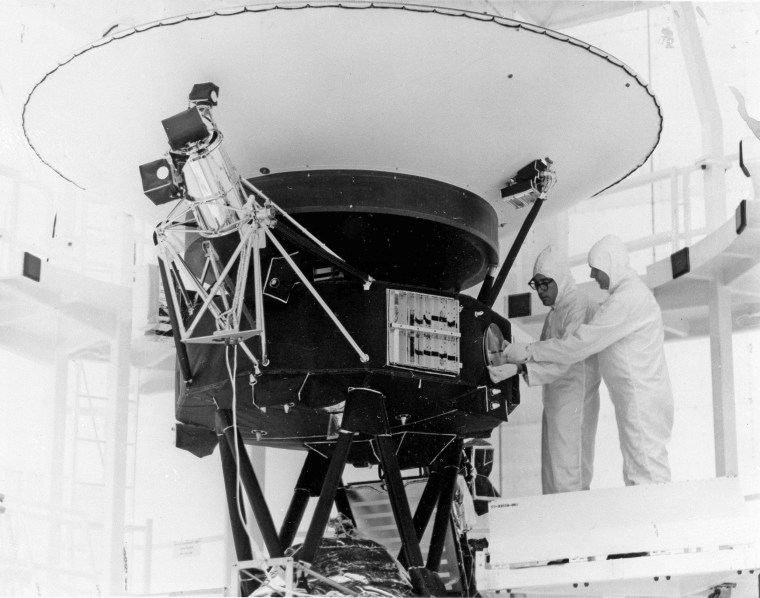
Golden Record
The "Golden Record" is mounted on the Voyager 2 spacecraft at the Kennedy Space Center on Aug. 4, 1977.
Both Voyager spacecraft carry phonograph records that include music and other sounds from Earth and are intended to give any intelligent aliens who might encounter the craft a sense of what life on our planet was like during the latter part of the 20th Century.
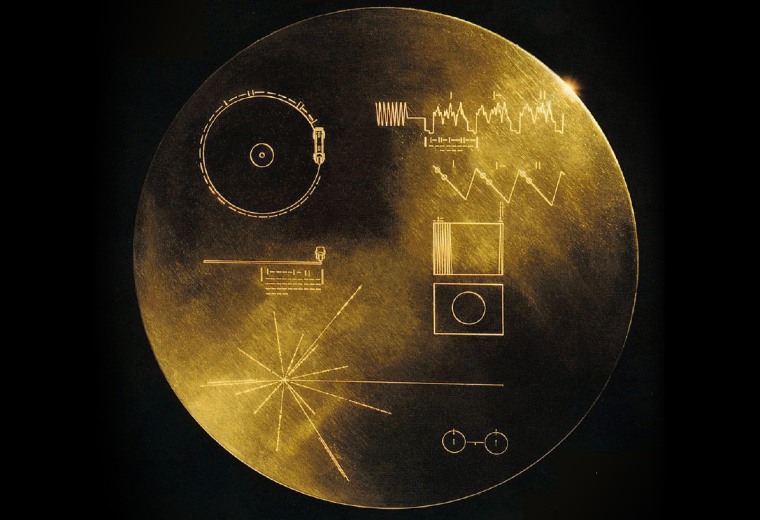
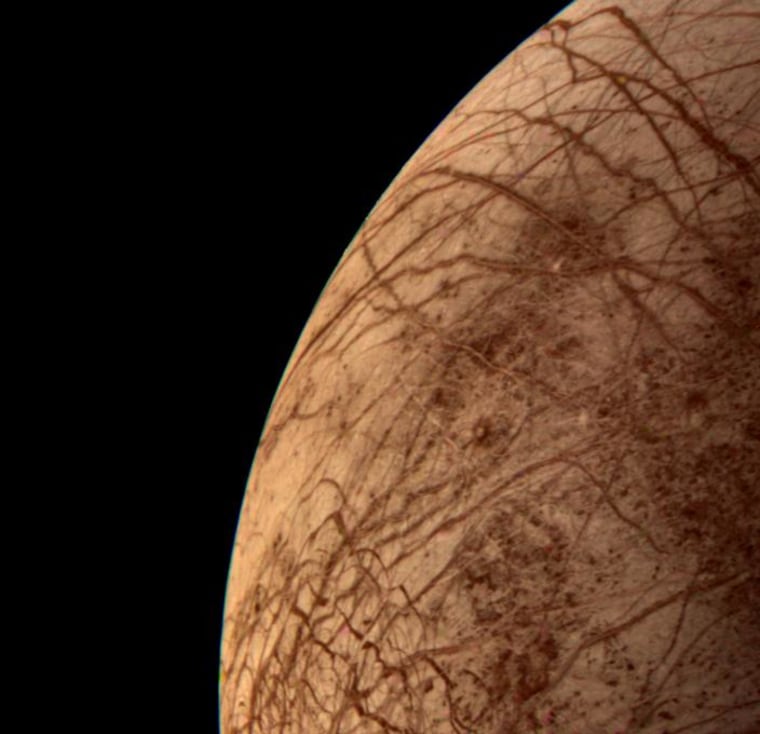

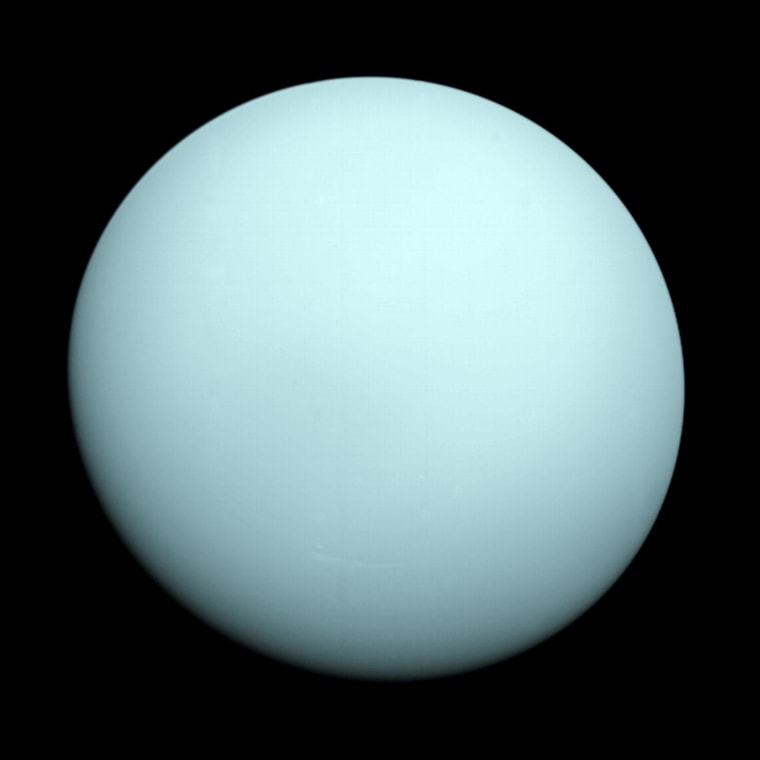
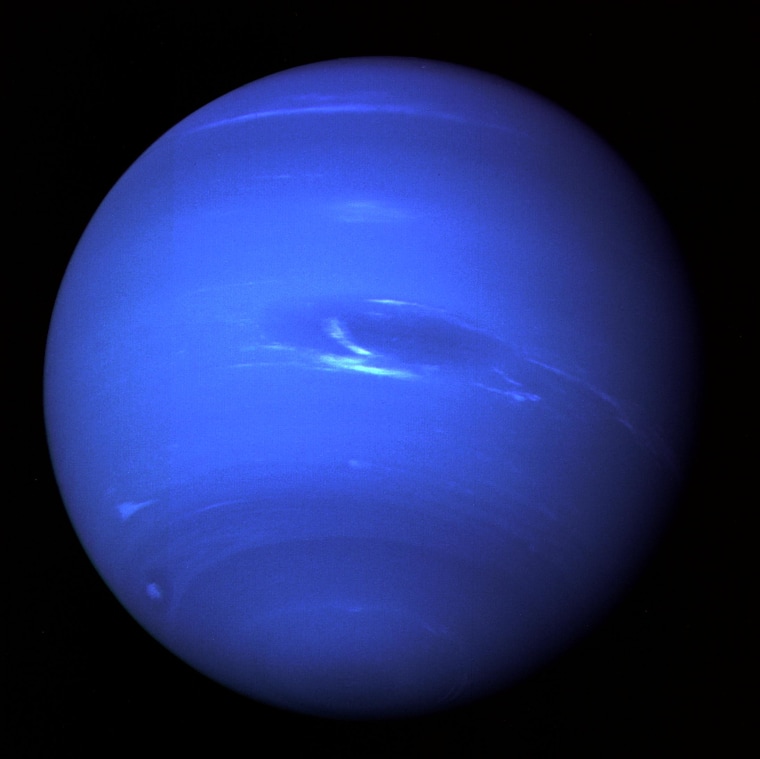
Expanded Mission: Neptune
Neptune's "Great Dark Spot" and its companion bright smudge are visible in this image captured by Voyager 2.
The Voyager mission was designed to take advantage of a rare geometric arrangement of the outer planets in the late 1970s and the 1980s which allowed for a four-planet tour for a minimum of propellant and trip time.
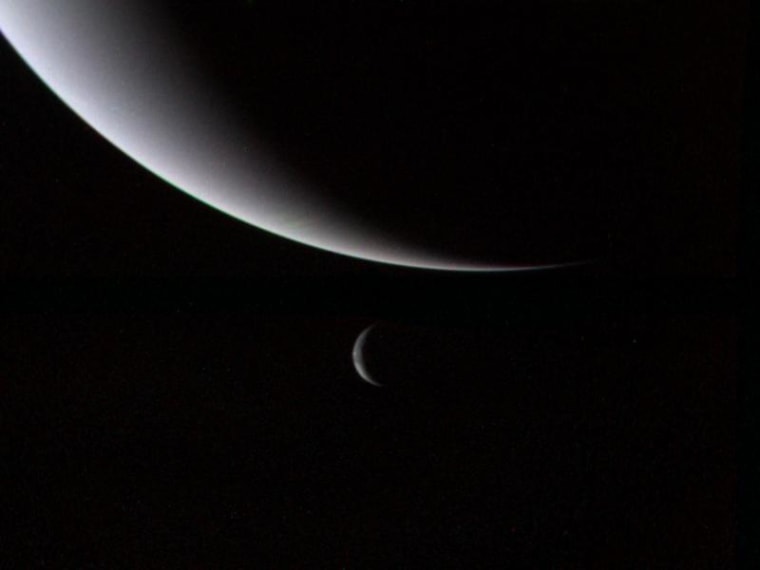
Parting View
The crescents of Neptune and Triton appear in this image acquired by Voyager 2 some 3 days after its closest approach to Neptune in 1989.
After completing their planetary flybys, the spacecraft continued on, flying toward the edge of the heliosphere, the huge bubble of charged particles and magnetic fields that the sun puffs out around itself. Voyager 1 popped free of this bubble in 20013, entering the unexplored realm of interstellar space. Voyager 2 is expected to follow suit in the next few years.
Related: Voyager 1 Marks 40 Years in Space
Month in Space Pictures: Marvelling at the Eclipse, Harvey from Orbit and More